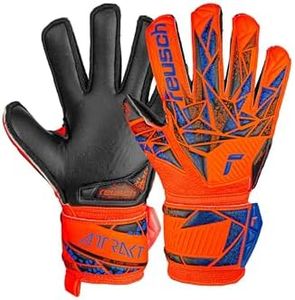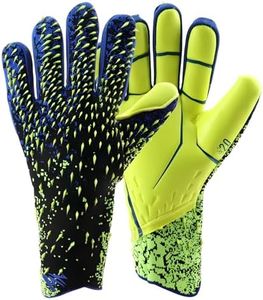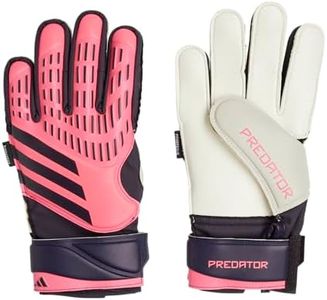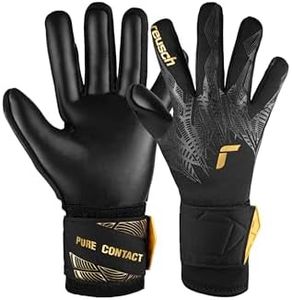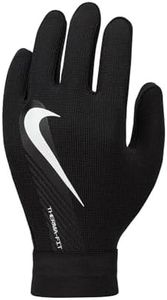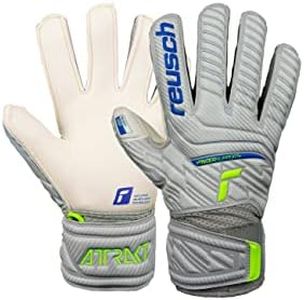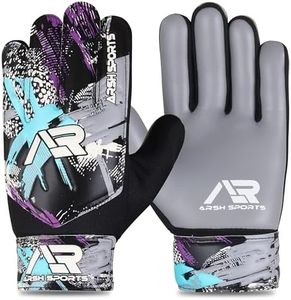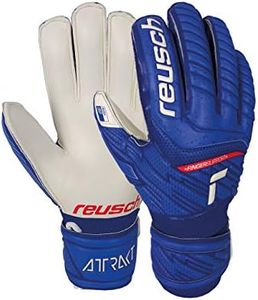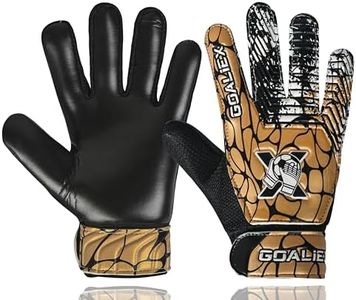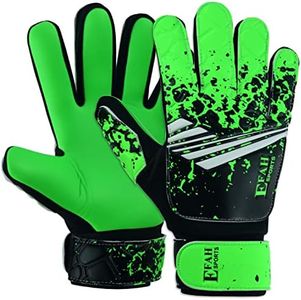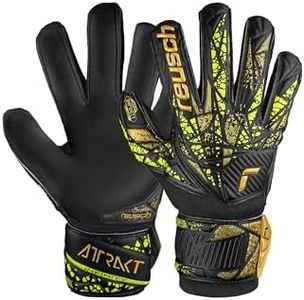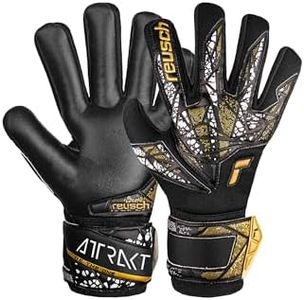We Use CookiesWe use cookies to enhance the security, performance,
functionality and for analytical and promotional activities. By continuing to browse this site you
are agreeing to our privacy policy
10 Best Goalkeeper Gloves For Kids
From leading brands and best sellers available on the web.Buying Guide for the Best Goalkeeper Gloves For Kids
Selecting the right goalkeeper gloves for kids is a crucial step to ensuring they are comfortable, confident, and protected while playing. The right pair will help young players grip the ball better, guard their hands from impact, and enjoy the game safely. Understanding the key features and how they relate to your child's skill level, playing frequency, and comfort will help you make an informed choice.Glove SizeGlove size refers to the fit of the glove around your child's hand. It's extremely important because gloves that are too big may slip off and make catching difficult, while those that are too small can feel uncomfortable and restrict movement. Glove sizes are usually measured in numbers, and you can divide them into small (typically for young children), medium (for pre-teens), and large (for teens or larger hands). To pick the right size, measure your child's hand from the tip of their longest finger to the base of the palm and refer to a glove sizing chart. Always prioritize comfort and an easy but secure fit over guessing based on age.
Palm MaterialPalm material is what covers the inside of the glove and determines grip and durability. Common materials are latex and synthetic alternatives. Latex offers excellent grip, especially in wet or dry conditions, but tends to wear out faster. Synthetics last longer and handle rougher play but do not always provide as much stickiness. For beginners or occasional players, synthetic palms are often fine, while kids playing regularly or at higher levels may benefit from latex palms for better performance.
Cut TypeThe cut type describes how the glove is stitched and how it fits on the fingers. The most common cuts are flat cut (looser fit, more room), roll finger (fingers wrapped in latex for a snug grip), and negative cut (tighter fit, popular with advanced players). Looser cuts are more forgiving for younger kids who are still growing, while snugger cuts may help experienced young keepers with ball handling. Choose the cut according to how the glove fits your child’s fingers and how they feel during play—comfort is key.
Finger ProtectionFinger protection refers to inserts or spines in the fingers of the glove for added support, helping prevent injuries like hyperextension. This feature is important if your child is frequently catching powerful shots or has previously injured fingers. Some gloves come with removable spines, so they can be adjusted as needed. Younger or beginner players might not need heavy finger protection, but it can provide peace of mind for more serious or injury-prone kids.
Wrist ClosureWrist closure is the system that keeps the glove secure around the wrist, using Velcro straps or elastic bands. A strong, adjustable closure is important for stability and prevents the glove from slipping off during action. Some closures offer a single wrap for simplicity, while double wraps give extra support. If your child is active and tends to be rough, a more secure closure helps provide confidence and reduces the risk of injury.
Backhand MaterialBackhand material covers the top side of the glove and provides cushioning for punching the ball. Softer, more padded backhands absorb impact better, while thinner, lighter materials offer more flexibility and comfort in warm conditions. For younger kids or those new to goalkeeping, extra padding on the backhand can provide more protection, whereas more experienced players might prefer a lighter glove for increased hand movement.
